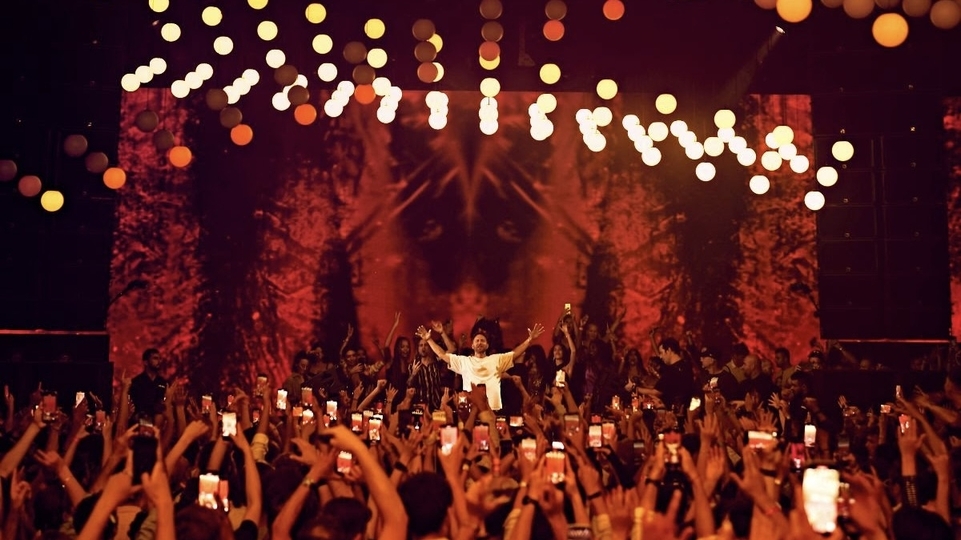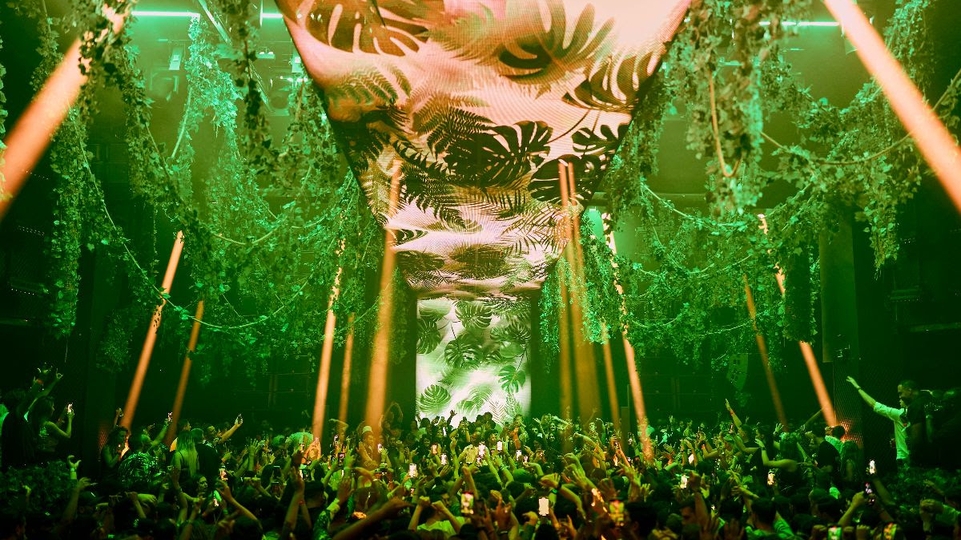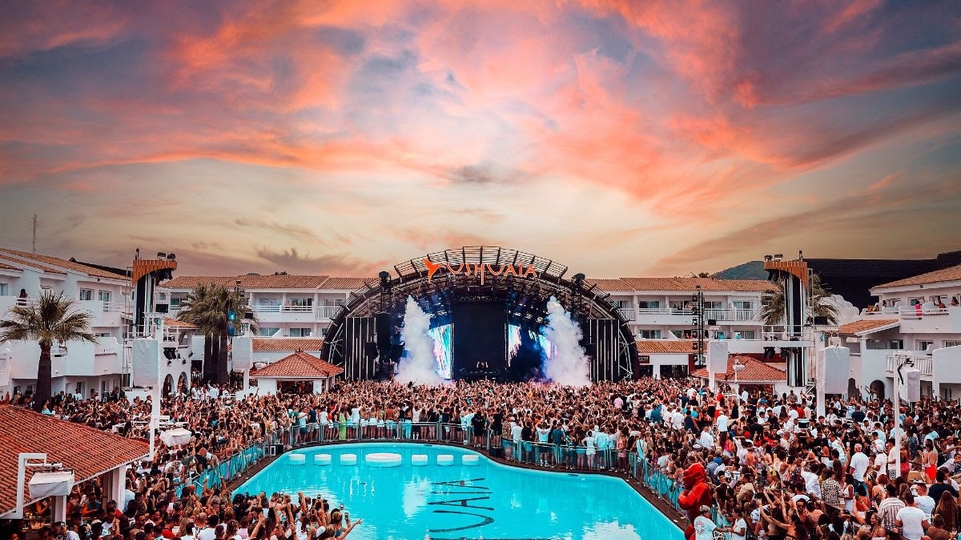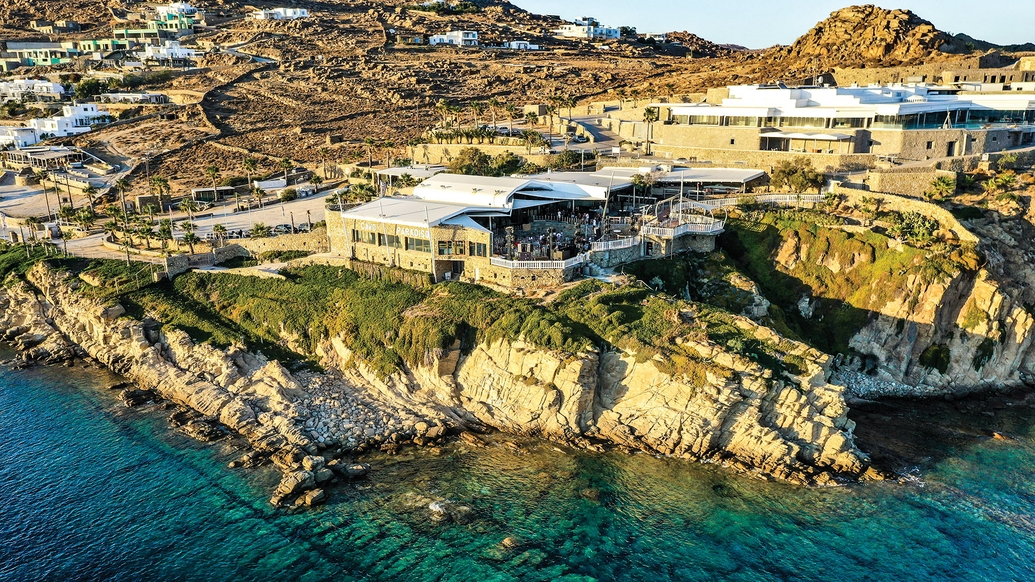
Cavo Paradiso: the evolution of a legendary dancefloor
Thirty years on from first opening its doors, Cavo Paradiso is a true destination club. Having made its name during the peak of progressive house, this Top 100 Clubs staple now caters for an international crowd. Martin Guttridge-Hewitt hears about the ups, the downs, and the secret to Cavo’s longevity
As the first ruby rays of summer sunshine pierce the endless horizon, slowly revealing subtle differences between the shade of sea and sky, it’s pretty hard to think of many places you’d rather be than Cavo Paradiso. Situated on a hillside somewhere in the south of Mykonos, it’s home to a breathtaking view across idyllic bays and crystal waters beyond, and one of Europe’s most legendary dancefloors.
The club is the birthplace of numerous legends. A simple outdoor bar built on the site of a traditional shepherd’s hut, after opening in 1993, it soon became known for more than just the setting. A forward-thinking music policy and open-armed attitude attracted adventurous revellers from far and wide, many making their pilgrimage by ferry from the Greek mainland, keen to experience a fabled place that had taken to opening at 5.30AM and running through Sunday to circumvent prohibitive licensing.
By the turn of the millennium, the venue had achieved global renown for the kind of landmark moments that make the annals of club culture. If walls could talk we can only imagine what Cavo Paradiso’s would say; thankfully Stathis Lazarides is happy to clear some details up. One of the venue’s resident DJs, promoters, and bookers — alongside Coolis Kalopetris and Lorenzo Papachrisanthou — his own journey goes from commercial DJ in the late ’80s, to finding underground electronic music at spaces like Factory in Athens, before moving to London sometime around 1993. There, he became involved with Luton-based rave crew Equinox and, immersed in the dance moment, heard talk of what was happening back home.
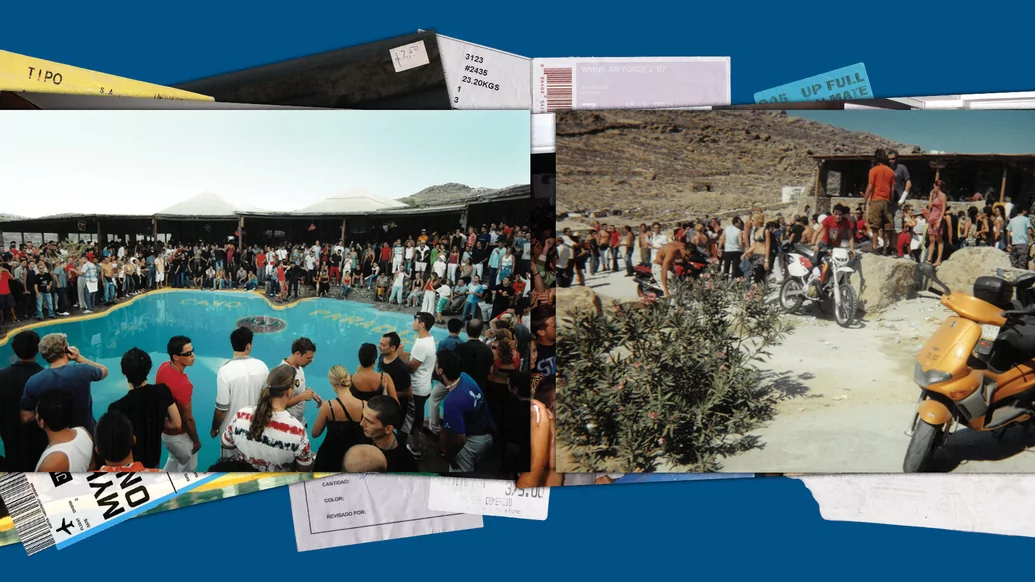
“With Cavo, especially in the ’00s, it just exploded. And it was specific nights that created the mythology.” — Stathis Lazarides, DJ, promoter, and booker at Cavo Paradiso
“First I knew [about Cavo Paradiso] was a DJ Mag article... I think 1996? I didn’t know much about it until then, but had known about Mykonos,” says Lazarides, explaining how during this period the island itself was relatively underdeveloped, and tales of wide-eyed 20-somethings camping out on stunning beaches after diving into a burgeoning party culture were not uncommon. “Close friends [on the mainland] spoke to me about this place, how amazing it was. The venue had been working with some promoters from Athens, Magna, but kind of parted ways around 1997.”
Able to provide a bridge between Greece and the extensive UK dance music network, Lazarides worked with Cavo Paradiso founder and owner Nikos Dactylides, and his wife, general manager Margharita Antonini, on one event in 1999. A year later, this fledgling team threw 10 parties, with the likes of CJ Mackintosh and Harry Romero drafted for duties. John Digweed also stepped up, and then returned the following year for what remains one of the most talked-about entries in the club’s history book. The Bedrock boss played an unexpected 13-hour set; a shift only occasionally broken by a quick dip in the venue’s outdoor swimming pool. News of such sights travelled fast, and the momentum was tangible.
“When you create such hype around something it’s hard to sustain it for a long period of time. We’ve seen so many great clubs come and go within a decade. That’s the usual thing that happens, to be honest. But with Cavo, especially in the ’00s, it just exploded. And it was specific nights that created the mythology,” says Lazarides, confirming laxer licensing was also introduced around this time, so music could run all night. “Word of mouth went worldwide, there wasn’t a social media campaign or anything like that. You can’t create a better mythology than this, without actual photographic evidence of it, no real media around it. It becomes more mythical because people weren’t there.”

While this part of the club’s odyssey is often associated with a progressive sound that was in rude health, Lazarides also cites a trio of house music heroes who played another session as integral to the legacy. “At David Morales’ 40th birthday party, while he was playing he was surprised by Louis [Vega] and Frankie [Knuckles] showing up. They all played back-to-back-to-back. I mean, can you imagine? Incredible. And I don’t think it has ever been easy to find what Cavo has in other places.”
Now in its fourth decade, to say plenty has changed at the venue would be an understatement — much of which mirrors wider shifts in electronic music, and on Mykonos itself. Greece’s deep, enduring economic crisis, which followed the global financial crash in 2008, altered demographics. Far fewer domestic tourists could afford rising costs on the island, now a paradise, Lazarides half-jokes, where “all the people who profited in that crisis came to spend their money”. Cavo became a destination for a predominantly multinational crowd, while EDM rapidly grew as the most audible electronic noise on the worldwide stage, triggering new expectations in terms of production scale and nightlife experience.
A major renovation and redesign in 2010 opened a new chapter in Cavo’s storied epic. Significantly building on what had once been a simple operation in order to suit increasingly high-concept shows, a new Funktion-One sound system arrived, as did state-of-the-art lighting. The (in)famous swimming pool went, freeing up floor space so the DJ booth could be repositioned, truly maximising on the incredible views that first lured people in those formative years. This decision, we’re told, has also significantly improved the flow of bodies through the space. Soon the likes of David Guetta, who first performed there way back around 2004, were the ones causing regular roadblocks.
“As far as adaptation goes, we’ve done brilliantly,” says Lazarides, explaining how Cavo’s continued relevance can be seen in its ongoing ability to platform names before they blow up — MEDUZA, for example, who debuted at the club in 2017. Nevertheless, he also admits this hasn’t always been an easy ride, with the club overcoming not one but two economic doomsdays given the recent Covid-19 pandemic
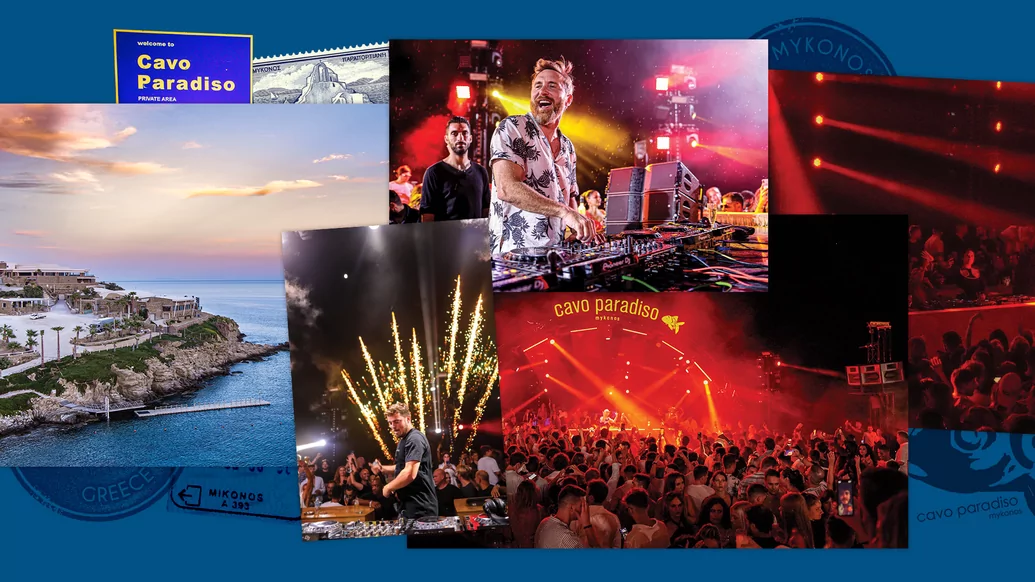
“We haven’t made many changes, all the way to the door staff. Many of us have been here 25 years, and I think that has a massive role to play in longevity.” — Stathis Lazarides
Although able to continue operating its summer schedule in 2020 and 2021, within legal restrictions and guidance, we are told in no uncertain terms that the way the venue is led — by those who built it and their longstanding comrades — and ownership of the land are key to its survival. “As a team, through most of this, we have remained largely the same. We haven’t made many changes, all the way to the door staff. Many of us have been here 25 years, and I think that has a massive role to play in longevity, moving forwards together. That’s a big achievement,” he says. This unit is a “close-knit family”, as he puts it, committed to each other, and the venue they have put so much of themselves into, most recently with the production of a new film charting the timeline, then to now.
As our conversation winds down, Lazarides betrays where all that conviction comes from — the drive, energy, and determination. And it’s a sharp reminder of what seems to be at risk in so many corners of the world, bells tolling for the lifeblood of a culture, never mind the industry behind it. “The scene would not survive if it was just festivals. Clubs are incredibly important, everything started from the clubs. So places like Cavo remaining healthy is really important, for the scene as a whole.”
